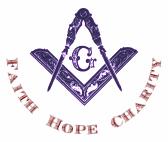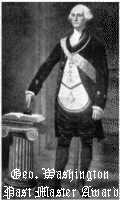 Back in the early '90s, there was a great television show called Twin Peaks caused a bit of a stir. It was a bizarre romp
through the twisted minds of David Lynch and Mark Frost. The show was packed full of symbolism,
both expected and bizarre, and was so rich and twisted in detail that even today discussions and
arguments attempting to decipher and come to an understanding of its messages are common. Some of
the symbolism may seem similar to Freemasons, including references to lodges, conspiracies, and
secret societies.
Back in the early '90s, there was a great television show called Twin Peaks caused a bit of a stir. It was a bizarre romp
through the twisted minds of David Lynch and Mark Frost. The show was packed full of symbolism,
both expected and bizarre, and was so rich and twisted in detail that even today discussions and
arguments attempting to decipher and come to an understanding of its messages are common. Some of
the symbolism may seem similar to Freemasons, including references to lodges, conspiracies, and
secret societies.
Much of this apparently came from Mark Frost, whose interests in Theosophy and other 19th century movements are revealed in some of his novels (such as List of Seven and The Six Messiahs), none of which I've read. I'd encourage any Freemason to check out Twin Peaks. You can rent the series on DVD at NetFlix.
 In May I talked about hermeticism and it's relationship to
Freemasonry, and during my browsing and reading I've come across more articles and websites
discussing such connections. I continue to think that it is vital for Freemasonry to stop dodging
our many various connections to controversial ideas of the past, and in this light I bring to you "A Basic Historico-Chronological
Model of the Western Hermetic Tradition" by Bro. Trevor Stewart. The article is just as long
and cumbersome as its title suggests, which is why I give you special permission to jump all the way
to part 6, subtitled "Masonic
Initiation of Today Viewed as a Process". Bro. Stewart has this to say about the state of
affairs of esoteric Masonry in the UGLE today:
In May I talked about hermeticism and it's relationship to
Freemasonry, and during my browsing and reading I've come across more articles and websites
discussing such connections. I continue to think that it is vital for Freemasonry to stop dodging
our many various connections to controversial ideas of the past, and in this light I bring to you "A Basic Historico-Chronological
Model of the Western Hermetic Tradition" by Bro. Trevor Stewart. The article is just as long
and cumbersome as its title suggests, which is why I give you special permission to jump all the way
to part 6, subtitled "Masonic
Initiation of Today Viewed as a Process". Bro. Stewart has this to say about the state of
affairs of esoteric Masonry in the UGLE today:
The general level of Hermetic exploration on a regular basis in English-speaking Lodges is now minimal. Their present state of philosophical impoverishment has accumulated for more than 150 years since the compromise formulation which defined Freemasonry in minimalist terms at the union of the two rival Grand Lodges in London in 1813. That Union created the present UGLE which has formally shunned making any clear recommendations regarding possible interpretations of symbols or even propounding any syllabus for systematic study.While I would never wish to force any Freemason to interpret the Craft as a purely Hermetic pursuit, I think it is fair to say that recent research into our fraternity's origins give ample excuse for the modern student to do so.
"Freemasonry and the Hermetic Tradition" by R. A. Gilbert is a much more readable article, and was originally published in Gnosis Magazine. He writes, "Of those Freemasons who were inclined towards occultism at the close of the last century, the majority were deeply involved in the Theosophical Society, or at least in the teachings that it propagated." This ties nicely into the symbolic cross-pollination one might notice in the aforementioned Twin Peaks.
I am very interested in hearing the thoughts of any Freemasons regarding the influences of hermeticism on Freemasonry, or vice versa!



